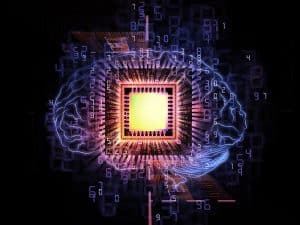
New products announced at the NVIDIA GTC conference had a common objective: Accelerate AI and extend its use to new application areas including digital twins, simulations, and 3D collaboration.
The NVIDIA GTC conference held this past week was a gathering place for everything related to artificial intelligence. Dubbed “The Developer Conference for the Era of AI,” NVIDIA and its ecosystem of technology cohorts made numerous product, solutions, and partnering announcements focused on accelerating artificial intelligence workloads and expanding AI into new application areas.
To start, NVIDIA announced major updates to its NVIDIA AI platform, a suite of software for workloads including speech, recommender system, hyperscale inference, and more. The technology has been adopted by global industry leaders such as Amazon, Microsoft, and Snap.
The company also announced the NVIDIA AI Accelerated program, which helps to ensure the performance and reliability of AI applications developed by NVIDIA’s software and solution partners. The program increases visibility to a wide range of proven AI-accelerated applications, enabling enterprise customers to deploy with confidence on the NVIDIA AI platform. Adobe, Red Hat, and VMware are among the more than 100 partners participating when launched.
See also: NVIDIA’s New Grace CPU Enables Giant AI
Other NVIDIA news from the conference includes:
- The announcement of the fourth-generation NVIDIA DGX system, the world’s first AI platform to be built with new NVIDIA H100 Tensor Core GPUs. DGX H100 systems are the building blocks of the next-generation NVIDIA DGX POD and NVIDIA DGX SuperPOD AI infrastructure platforms. The latest DGX SuperPOD architecture features a new NVIDIA NVLink Switch System that can connect up to 32 nodes with a total of 256 H100 GPUs.
- The unveiling of more than 60 updates to its CUDA-X collection of libraries, tools, and technologies across a broad range of disciplines, which dramatically improve the performance of the CUDA software computing platform. Built on top of CUDA, NVIDIA’s platforms for artificial intelligence, HPC, and graphics include software development kits and tools that are at the heart of enabling higher performance and accelerated algorithms across multiple application domains. The SDKs make it easy for developers, researchers, and data scientists to tap into the power of NVIDIA’s advanced platform, tackling the immense complexity at the intersection of computing, algorithms, and science.
- The introduction of its next-generation accelerated computing platform with NVIDIA Hopper architecture. The company also announced its first Hopper-based GPU, the NVIDIA H100, packed with 80 billion transistors. The accelerator has features such as a Transformer Engine and a highly scalable NVIDIA NVLink interconnect for advancing gigantic artificial intelligence language models, deep recommender systems, genomics, and complex digital twins.
- The launch of the NVIDIA OVX, a computing system designed to power large-scale digital twins. NVIDIA OVX is purpose-built to operate complex digital twin simulations that will run within NVIDIA Omniverse, a real-time physically accurate world simulation and 3D design collaboration platform. The OVX system combines high-performance GPU-accelerated compute, graphics, and artificial intelligence with highspeed storage access, low-latency networking, and precision timing to provide the performance required for creating digital twins with real-world accuracy. OVX will be used to simulate complex digital twins for modeling entire buildings, factories, cities, and even the world.
Kroger and NVIDIA team up
Also at the conference, The Kroger Co. and NVIDIA announced a strategic collaboration to reimagine the shopping experience using AI-enabled applications and services. The two companies will build a state-of-art AI lab and demonstration center to expand Kroger’s freshness initiatives, improve shipping logistics, and create a better shopping experience in stores through digital twin simulations – virtual models designed to accurately reflect store layouts and other operations.
The lab will be located in Kroger’s Cincinnati-based headquarters office. It will use the NVIDIA AI Enterprise software suite for Retail, NVIDIA Omniverse Enterprise to build digital twin simulations, and NVIDIA ReOpt to explore logistics optimizations. The initial installation will use nine NVIDIA DGX A100 systems, NVIDIA InfiniBand networking, and NVIDIA RTX workstations to gather actionable insights on the grocer’s nearly 2,800 stores across the United States.
Additionally, the companies will explore how NVIDIA technology can:
- Identify early indicators of deteriorating freshness through computer vision and analytics.
- Use dynamic routing for last-mile delivery to ensure freshness from farm to plate
- Optimize store efficiency and processes with digital twin store simulation
Other artificial intelligence news from the conference
VAST Data announced support for a next-generation storage platform concept called Ceres. Enabled by VAST’s Universal Storage data platform, Ceres is built leveraging new hardware technologies, including NVIDIA BlueField DPUs (data processing units) and ruler-based hyperscale flash drives that improve performance, simplify serviceability, and reduce data center costs.
DDN announced its next-generation flash and hybrid data platforms for NVIDIA DGX POD and DGX SuperPODAI, analytics, and deep learning computing infrastructure. The DDN A3I AI400X2 system delivers more than 90 GB/s and 3 million IOPS to an NVIDIA DGX A100 system. Available with 250TB and 500TB all-NVMe usable capacity and with the ability to scale orders of magnitude more, the DDN AI400X2 is designed to be a high-performance building block for AI infrastructures.
Lenovo announced it has extended its work with NVIDIA to deliver industry 3D simulation and design collaboration capabilities by providing the infrastructure required to power NVIDIA OVX, a computing system designed to run large-scale Omniverse digital twins. The collaboration leverages Lenovo infrastructure and workstations to deliver real-time virtual remote work capabilities enabled by NVIDIA Omniverse Enterprise and runs on the latest NVIDIA GPUs.
Syslogic announced its newest AI Rugged Computer based on an NVIDIA Jetson AGX Xavier. Syslogic Rugged computers are among the most robust systems on the market and are used in agricultural robots, agricultural and construction machinery, and special vehicles. The new AI Rugged Computer RPC RSL A3 was designed from the ground up for autonomous machines and vehicles. With its powerful NVIDIA Jetson AGX Xavier industrial module, the embedded computer becomes the computer vision unit and handles tasks such as object recognition, environmental perception, or intelligent control of autonomous machines and vehicles. The rugged computer can process and evaluate data from multiple sensors simultaneously and practically in real time.
Run:ai announced details of a completed proof of concept (POC) that enables multi-cloud GPU flexibility for companies using NVIDIA GPUs in the cloud. NVIDIA’s software suite includes virtual machine images, or VMIs, which are optimized for NVIDIA GPUs running in clouds such as Amazon Web Services, Microsoft Azure, Google Cloud, and Oracle Cloud. Run:ai’s workload-aware orchestration ensures that every type of AI workload gets the right amount of compute resources when needed, and provides deep integration into NVIDIA GPUs to achieve optimal utilization of these resources. Run:ai software deployed on NVIDIA VMIs enables cloud customers to move AI workloads from one cloud to another, as well as to use multiple clouds simultaneously for different AI workloads with zero code changes.






























